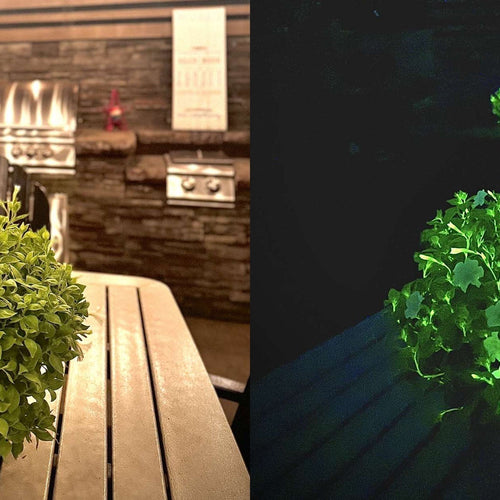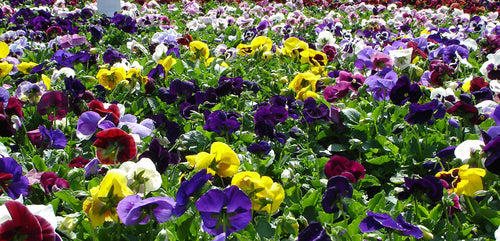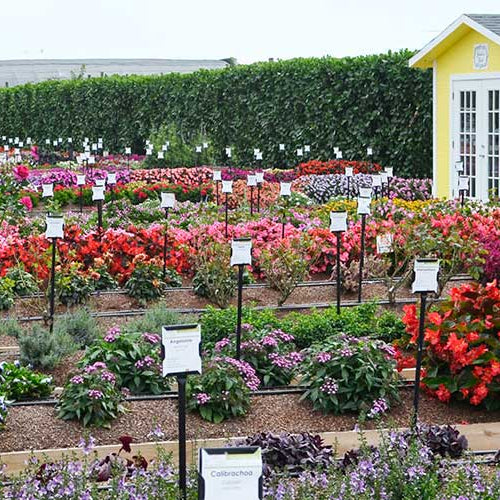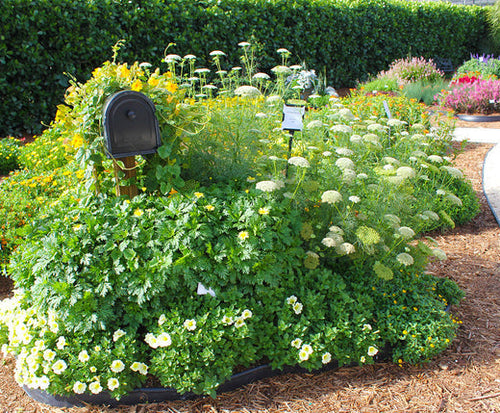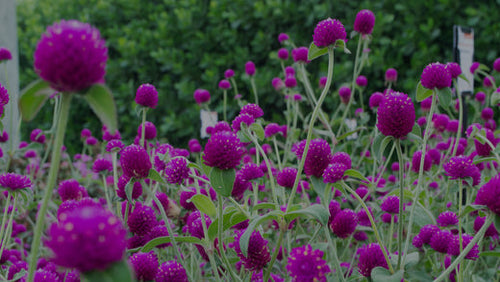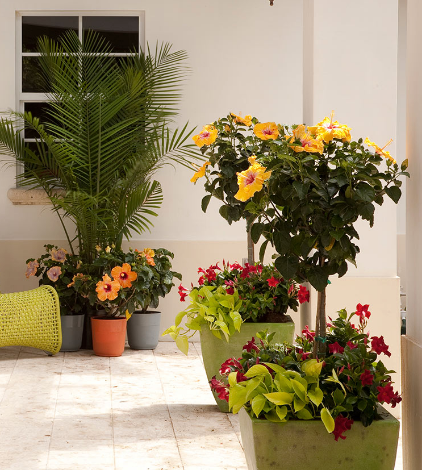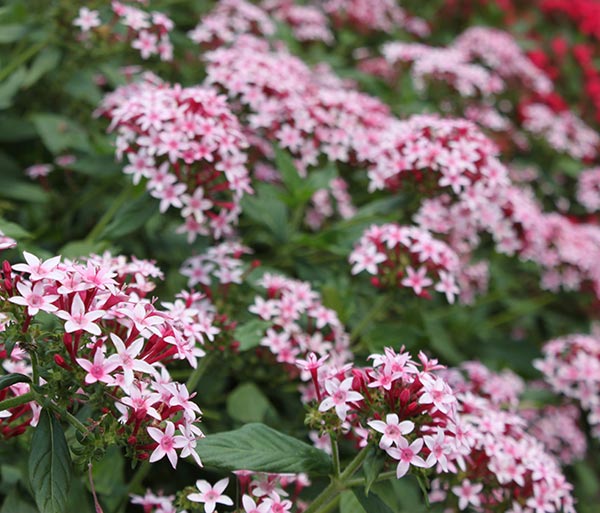
Pentas
You can’t go wrong planting low-maintenance pentas in your yard. One of the easiest flowers to grow in Florida, pentas blooms nonstop, producing showy clusters of red, pink, lavender, or white flowers. The blooms are beautiful and also irresistible to butterflies and hummingbirds. I frequently see zebra longwing butterflies (Florida’s official state butterfly) visiting the pentas in my yard. There is a host of varieties available that grow different sizes, from compact (that reach 12 to 14 inches tall) to full size (that can top out at 36 to 48 inches tall). A new collection, called Falling Star, stay low and are useful in and hanging baskets.
Grow pentas in full sun or part shade and well-drained soil. Once established, it’s moderately drought tolerant. Regularly fertilizing in spring and summer will help encourage best blooms in sandy soils. Or you can use a slow-release fertilizer a couple of times per year. It thrives in both container gardens and landscapes. Pentas is a perennial that grows well in North, Central, and South Florida.
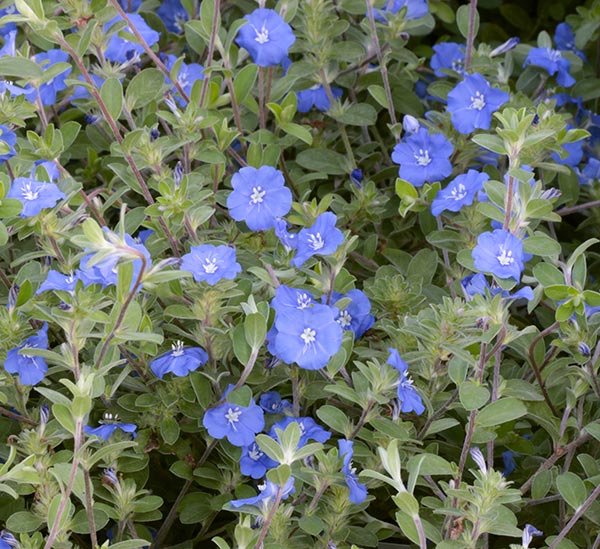
Evolvulus
Also called Blue Daze, evolvulus is a charming groundcover that offers true-blue flowers, a rarity in the gardening world. Those sky-blue flowers look great against its silvery-green foliage. It blooms nonstop, making it valuable for edging garden beds and borders or spilling over the side of a container garden. One quality that makes evolvulus such a good choice for Florida gardens is that it’s delightfully drought tolerant. Once established it rarely needs watering outside of natural rainfall. If evolvulus has a downside, it’s that its blooms are glorious in the morning, but usually close up by noon -- so be sure to plant it where you’ll enjoy it during the morning hours. Evolvulus typically grows about 6 inches tall and 12 to 18 inches wide.
Grow evolvulus in full sun or part shade and well-drained soil. Fertilizing it helps encourage best bloom display. It’s reliably perennial in Central and South Florida; in North Florida, it behaves more like an annual, especially in colder-than-average winters.
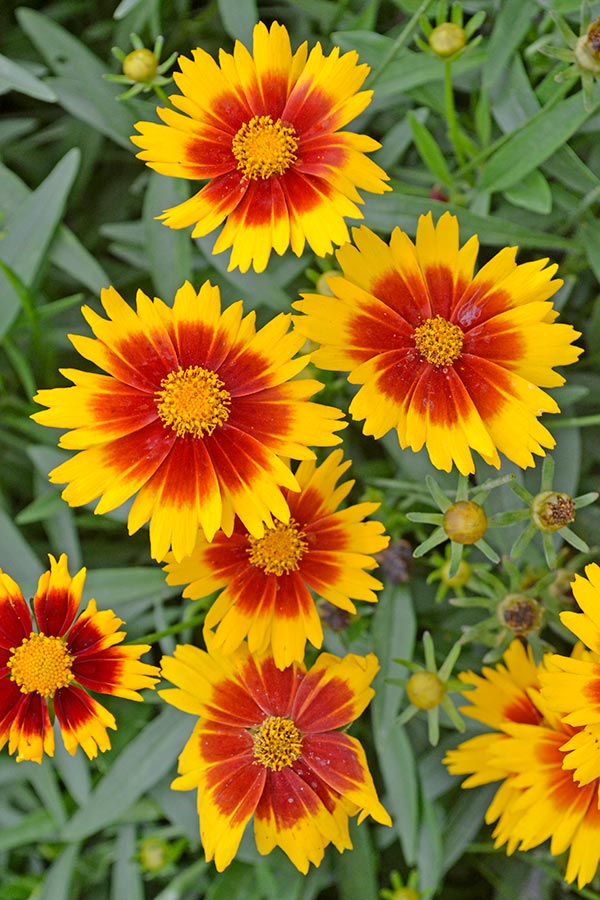
Coreopsis
Coreopsis, Florida’s official state flower, is one of the cheeriest plants you can grow in your garden. Most varieties show off daisy-shaped golden-yellow flowers, but plant breeders have been busy and you can find selections with single or double flowers, and blooms in shades of yellow, gold, orange, red, and pink. No matter what variety of coreopsis you grow, it’s likely to be a butterfly magnet and drought-tolerant, as well. The different types of coreopsis have different bloom times, too. Some pack in their flowers throughout spring; others go from spring to fall, so you can enjoy coreopsis much of the year.
Grow coreopsis in full sun or part shade and well-drained soil. Most types are reasonably drought tolerant once established and do a good job taking care of themselves. They thrive in both garden beds and borders as well as containers. Most coreopsis varieties are short-lived perennials in North Florida and annuals in Central and South Florida.
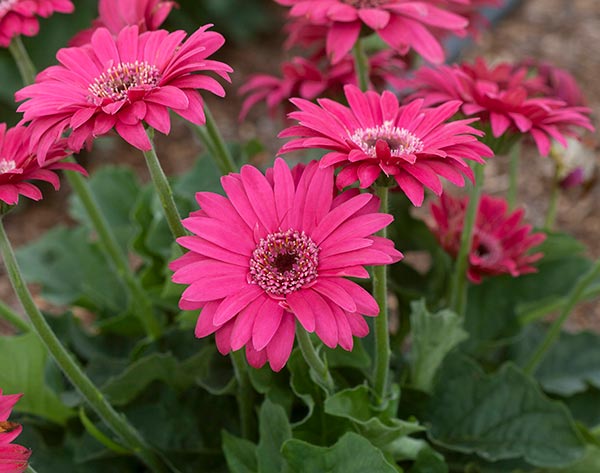
Gerbera
I wouldn’t have expected gerbera to be a great performer, given my experiences with many varieties in the Midwest. But I’d never tried the Garvinea collection. Top performers in our Miami, Florida, Trial Garden, Garvinea gerberas offer daisy-shaped flowers in a wide range of colors. And they are loved by pollinators. They’re fabulous in the landscape or container gardens, and the flowers hold up well indoors for bouquets, too. Most Garvinea gerberas grow about knee high and flower from spring to fall (all year long in South Florida). The foliage appears in dense, textured mounds and reminds me of leaf lettuce.
Grow Garvinea gerberas in full sun or part shade and moist, but well-drained soil. Water during times of drought to keep them happy and fertilize regularly in spring or summer to keep them blooming profusely. They are perennials in North, Central, and South Florida.

Bolivian Sunset Gloxinia
A showstopper in Central and South Florida gardens, Bolivian Sunset gloxinia (Gloxinia ) bears glossy, dark green leaves and outrageously orange flowers in late autumn and winter. It’s a must-have for winter color. Happily, in areas outside of Florida, it also makes a good houseplant. It’s a bit of a spreader, but it’s not aggressive or invasive in any way. Over time, Bolivian Sunset gloxinia makes an impressive clump that you can see across the yard when it’s in full bloom. It typically grows up to 24 inches tall.
Grow Bolivian Sunset gloxinia in part shade and moist, well-drained soil. It can handle full sun, but you have to keep the soil evenly moist in a sunny spot. A good layer of mulch over the soil helps retain moisture during hot, dry summer weather. It is best suited to Central and South Florida; it can be unreliably hardy in North Florida. But, it does grow well indoors.

Blue Salvia
Blue salvia (Salvia farinacea) is native to the Southwest United but also does well for us here in Florida. It features of violet-purple or white flowers throughout spring, summer, and fall throughout much of Florida, with some blooms in winter in the Southern part of the state. It’s a favorite of bees, butterflies, and hummingbirds, making blue salvia is a must-have for pollinator gardens. It’s also a top choice for low-maintenance landscapes and container gardens and planters. Different varieties can grow 18 to 36 inches tall and about 12 to 18 inches wide. The blooms hold up fairly well as cut flowers and the scented foliage makes it somewhat deer and rabbit resistant.
Grow blue salvia in full sun and well-drained soil. It thrives in hot, dry places where many other plants struggle. Once established, it’s reliably drought tolerant. In Northern Florida, it’s often treated as an annual, but it’s more reliably perennial in Central and South Florida.

Heuchera
One of my favorite perennials when I lived in the Midwest, I was delighted to discover heuchera does well here in Florida, as well. It shows off fantastic mounds of colorful foliage that are perfect for adding texture and interest to deeply shaded spots. It’s deer and rabbit resistant, too. There are a wealth of varieties available; Florida gardeners should look for selections that hold up well to heat and humidity, such as ‘Bressingham Hybrids’ or ‘Melting Fire’. You can find heuchera with bold purple, bronze, orange, chartreuse, or green leaves. Most are appreciated best for their foliage, rather than their flowers. Most grow about 12 inches tall and 12 to 18 inches wide.
Grow heuchera in shade in moist, well-drained soil. Once established, it’s somewhat drought but does -- and looks -- best with consistent soil moisture. Spreading a layer of mulch over the soil helps keep it happy during times of drought. It thrives in both garden beds and borders, as well as containers. Heuchera thrives in North, Central, and South Florida.
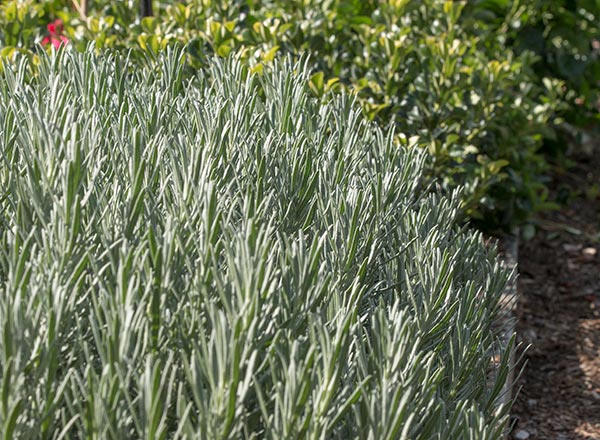
Lavender
Lavender (Lavandula) offers beauty and fragrance! This drought-tolerant garden plant charms gardeners as well as bees and butterflies with its lovely spikes of violet-purple, pink, or white flowers and silvery-green foliage. The oils that give the leaves and flowers their scent make lavender an excellent choice for potpourris and sachets, and because the flowers dry well, it is also fun for dried-floral crafts. Be sure to plant lavender along walkways where you can easily brush up against the plant to release the fragrance.
Grow lavender in full sun and well-drained soil. It thrives in sandy soil and actually resents ground that stays wet for extended periods. If you have an irrigation system, it’s helpful to keep lavender away from sprinklers that will regularly wet its foliage. The plant thrives in garden beds and borders, as well as container gardens. It’s a perennial in North, Central, and South Florida, through it usually blooms better in northern parts of the state.

Mexican Heather
Mexican heather (Cuphea) is a Florida garden staple that offers shiny, dark green foliage accented with charming lavender-pink or white flowers almost all year long. Though the plants look small, they form a dense and easy-care groundcover once they get established. And while you’ll love that they’re beautiful and low maintenance, bees and butterflies will love visiting the dainty flowers for their sweet nectar. Mexican heather is useful as a groundcover, in mass plantings, or as an edging plant in garden beds and borders where it thrives in the heat with practically no care at all. It grows 12 to 18 inches tall and 24 to 30 inches wide in time.
Grow Mexican heather in full sun or part shade and well-drained soil. Once established, it’s drought tolerant so you can just about plant it and forget it. In addition to thriving in landscapes, it’s also good for container gardens. It’s a perennial in North, Central, and South Florida.





